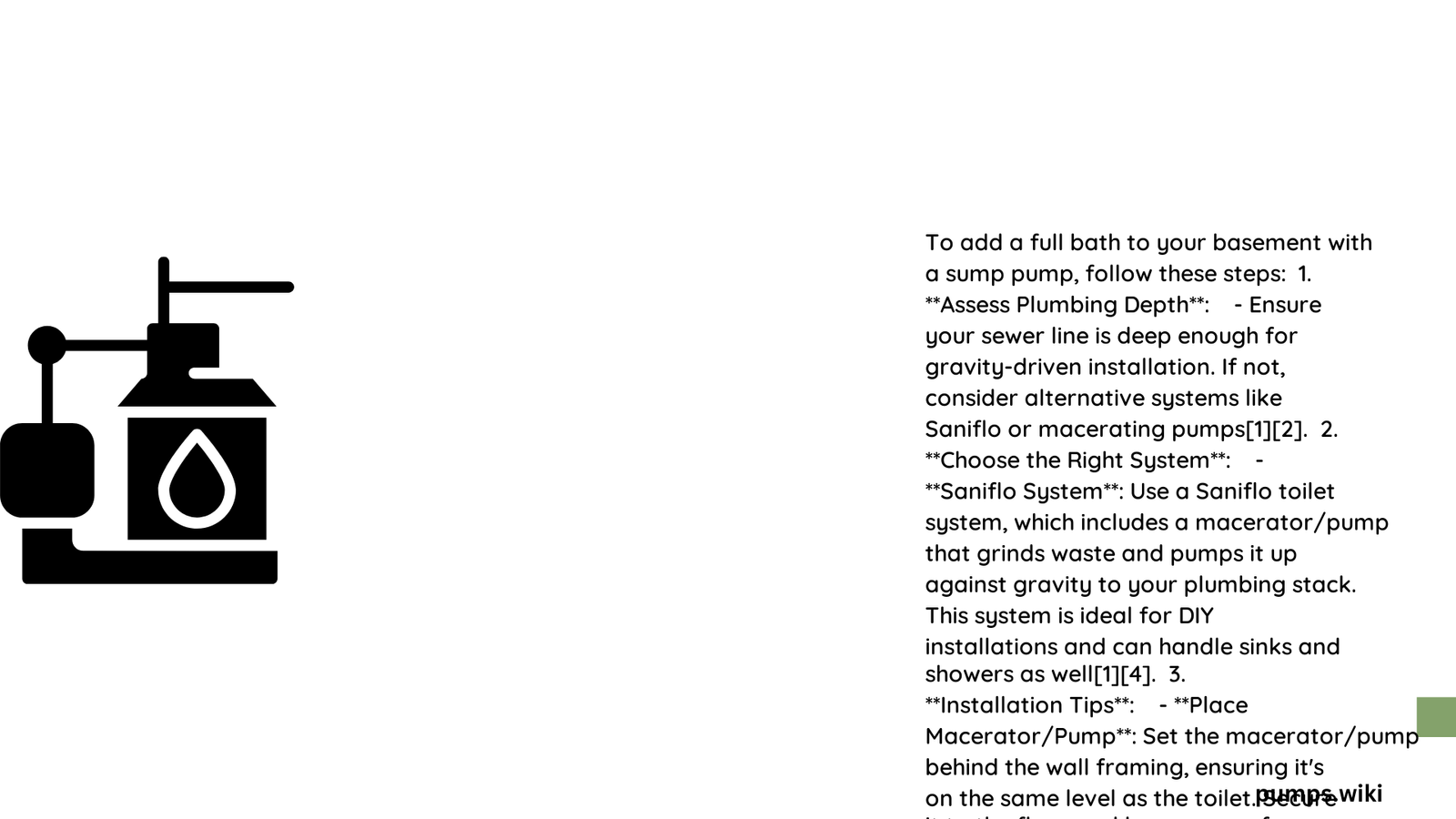Adding a full bath to your basement requires careful planning, specialized plumbing knowledge, and understanding of water management systems. Homeowners must navigate complex challenges like waste removal, water drainage, and structural waterproofing to create a functional and reliable basement bathroom. This comprehensive guide will walk you through critical steps, technical requirements, and essential considerations for successfully integrating a bathroom into your below-grade living space.
What Are the Primary Challenges of Basement Bathroom Installation?
Basement bathrooms present unique technical challenges that differ from standard home bathroom additions. Unlike upper-level bathrooms, basement installations require specialized pumping systems to manage waste and prevent potential water damage.
Why Do You Need a Specialized Pump System?
| Pump Type | Primary Function | Key Characteristics |
|---|---|---|
| Sump Pump | Water Removal | Handles groundwater and flooding prevention |
| Ejector Pump | Waste Management | Pumps sewage uphill to main sewer line |
Critical Considerations for Pump Selection
- Waste Handling Capacity
- Minimum 30-40 gallons per minute discharge rate
- 1/2 to 1 horsepower recommended
-
Capable of managing multiple bathroom fixtures
-
Vertical Lift Requirements
- Evaluate total vertical distance to main sewer line
- Select pump with appropriate head pressure capabilities
- Consider potential future expansion
How Do You Prepare the Basement for Bathroom Installation?
Waterproofing Strategies
Successful basement bathroom installation demands robust waterproofing techniques:
- Apply high-quality epoxy-based wall coatings
- Install polyurethane membrane on floors
- Seal all wall and floor penetrations
- Consider French drain system for comprehensive water management
What Plumbing Specifications Are Essential?
Drainage and Pipe Requirements
- Minimum 3-inch drain pipe for toilet
- 1/4 inch per foot drainage slope
- Proper venting to prevent gas buildup
- Corrosion-resistant piping materials
What Are the Potential Cost Implications?
Estimated Budget Breakdown
| Category | Cost Range |
|---|---|
| Ejector Pump | $500 – $1,500 |
| Fixtures | $1,000 – $3,000 |
| Plumbing Installation | $2,000 – $5,000 |
| Waterproofing | $500 – $1,500 |
| Permits and Inspections | $500 – $1,000 |
| Total Estimated Cost | $7,000 – $18,000 |
What Backup Systems Should You Consider?
Implementing redundant systems ensures continuous bathroom functionality:
- Battery-powered backup ejector pump
- Automatic switchover mechanisms
- Water level alarm systems
- Periodic maintenance contracts
Pro Tips for Successful Installation
- Consult licensed plumbing professionals
- Obtain necessary municipal permits
- Conduct thorough site assessment
- Plan for potential future upgrades
- Invest in high-quality, reliable equipment
Conclusion

Adding a full bath to your basement with appropriate sump and ejector pump systems requires meticulous planning, technical expertise, and strategic investment. By understanding complex water management challenges and implementing robust solutions, homeowners can successfully expand their living space while maintaining structural integrity.
